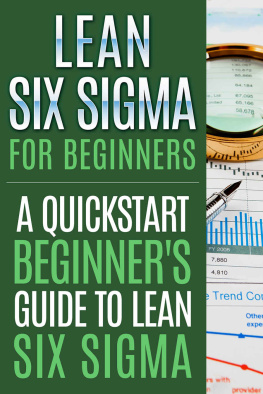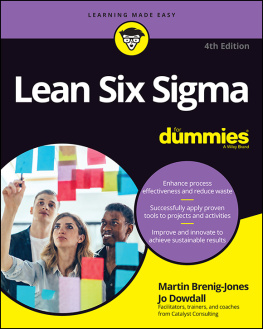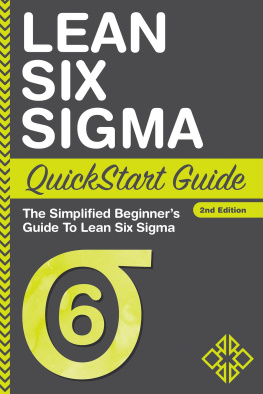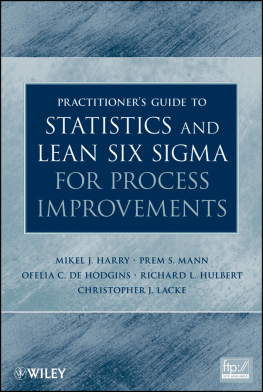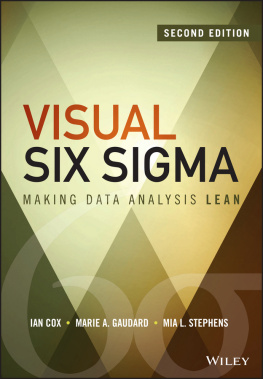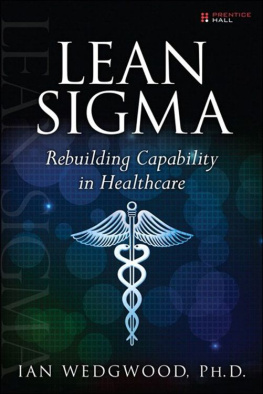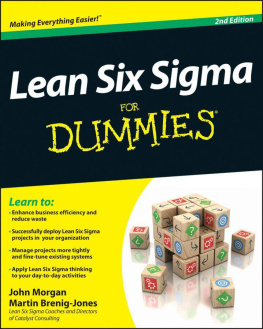G. Harver
2015 Copyright.
Text copyright reserved G. Harver
The contents of this book may not be reproduced, duplicated or transmitted without direct written permission from the author
Disclaimer : all attempts have been made by the author to provide factual and accurate content. No responsibility will be taken by the author for any damages caused by misuse of the content described in this book. The content of this book has been derived from various sources. Please consult a licensed professional before attempting any techniques outlined in this book.
Introduction
Chances are you have heard of the Lean Six Sigma method of management. Most people have. Unfortunately, the different management styles that people are used to do not involve the employees themselves in a positive manner. Rather, they are models that seek to have the employee toe the line and do minimal thinking, if any. Yet that same employee is the one closest to where the action is on a consistent basis.
In this book, you will learn how to involve every participant in the organization in the organizations processes, so that each of them feels responsible for the success of the organization. You will also learn the best means to cut down on waste, which is another way of showing you how to minimize costs as you improve performance. One of the most desired characteristics of the Lean Six Sigma methodology is how specific it is. Every stage of every process is supported by well assembled data. For that reason, you are able to act decisively without having to worry about other considerations that may introduce biases or prejudices.
Great entrepreneurs like Henry Ford pioneered the Lean Six Sigma mode of management, and they grew to make a mark in the world. That is enough evidence that you can reach your potential in revenue earnings, and lead the pack in your industry by applying the essentials of Lean Six Sigma in their modern form. This book shows you how you can get a select number of staff trained and then use them to pioneer change in your institution. It takes you through the main training stages, showing you the importance of certification in this area. You will even be able to see how marketable professionals who are versed in the workings of Lean Six Sigma are. This book even makes mention of big multinationals who continue to hire black belts and other certified persons. You will be able to see the most common jobs that call for Lean Six Sigma certification with a top of the range salary.
In this book, you can learn how to improve performance, not just in the business sector, but also in the professional arena. You will be able to see how you can streamline systems in a way that services flow efficiently and clients feel satisfied to the extent of giving your organization a vote of confidence. In fact, the book goes a step further and shows you how possible it is to improve processes within government as well, improving staff performance while lowering government expenditure. And you can even see how making the health sector efficient, in turn, impacts the wider society with things like reduced sick leaves and so on.
When you read this book, you will see that it is possible, in all areas of operation, to have a great working environment and still keep costs low and yields high. You will also appreciate the importance of Lean Six Sigma, especially considering it is an area that is already tested internationally, and a credible certification process put in place. It is now your opportunity to see how much potential you are yet to explore, by taking up the Lean Six Sigma approach that has propelled many companies to the top, becoming pace setters in their respective industries.
Happy reading and best wishes as you watch your expenses drop, your performance improve and your profits shoot up!
Chapter 1 : What, exactly, is Lean Six Sigma?
Excuse me, but whatever Lean Six Sigma happens to be, you will agree it cannot be bulky because we are clearly told it is lean. Some things are that obvious and that is a good starting point. It cannot also carry fluff and unnecessary baggage with it. That is what lean connotes, isnt it? So, we have bagged those initial marks; let us now find out what Six Sigma then is.
Simply put, Six Sigma is a method of working where you focus on minimizing wastage in whatever it is that you are doing. We have in mind the service sector; the manufacturing sector; and even the trading sector. Six Sigma helps you monitor, through observed data, how well you are doing. What you do in Six Sigma is analyze the data within your project and establish the degree of poor performance and that is what you work on reducing.
Surely, you understand what we are essentially saying. For example, if you happen to be manufacturing a brand of alcoholic drinks, there is no way you will anticipate sending out to the market some cartons with empty bottles well corked. This is because your plan is not to short-change your customers and chase them away, but to supply them with cartons of full bottles of the drink. You do not also want to send out some batches with lower alcohol levels than stated on the label. Six Sigma is basically that no complicated stuff.
If you are running a salon, you want your clients to leave your parlor with their heads looking like the picture you both agreed on or maybe close. And if your role is to supply materials to a manufacturing entity, you cannot surely afford to be that notorious supplier costing your customers hours upon hours of downtime because of your unreliable deliveries. You need to have set timelines within which to make deliveries after receiving the orders.
In short, Lean Six Sigma calls for systems whose performance can be measured. And after gauging your performance against what is expected, you deduce where losses are occurring in terms of wasted inputs and so on; and then you correct that.
So what are the guidelines in Six Sigma?
- First of all, you need to know what you would like to achieve: your intended specifications
- Then you need to measure the results of your performance at every stage of the process. For purposes of credible assessment, you need to then get the average of various results that you get over a set period of time, and that is the figure you then take as your mean for purposes of calculations.
Those two your intended results and your actual mean results must be as close as possible for you to speak of efficiency and impressive performance. The wider the variation between those two levels, the worse you are performing. In short, you do not want to deviate from what you planned with a big margin. You want to be as close as possible to what you initially planned. And you know what they call such kind of discrepancies? Well, they are called deviations. And that is because you are deviating from the planned results. You are deviating from the best way of doing things; the reason your performance is not optimum.
Your Expectations for Lean Six Sigma
At the end of the day, what you seek to achieve when you introduce this methodology of doing things into your organization is:
Alignment of projects with the organizations strategic objectives
This you do by having clearly defined roles for everyone involved and having set protocols for measurements
Objective assessment of processes
You want to know how ready the processes are to deliver the required output at the quality anticipated and that is as close as possible to excellence

